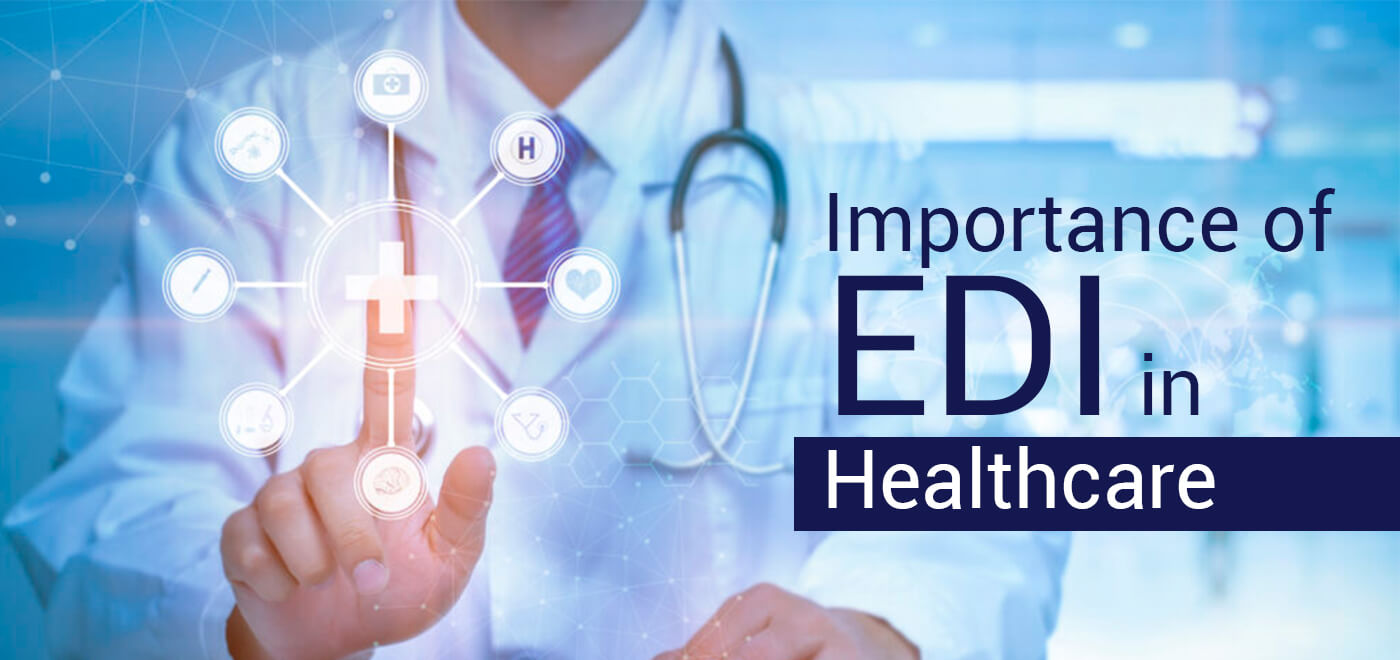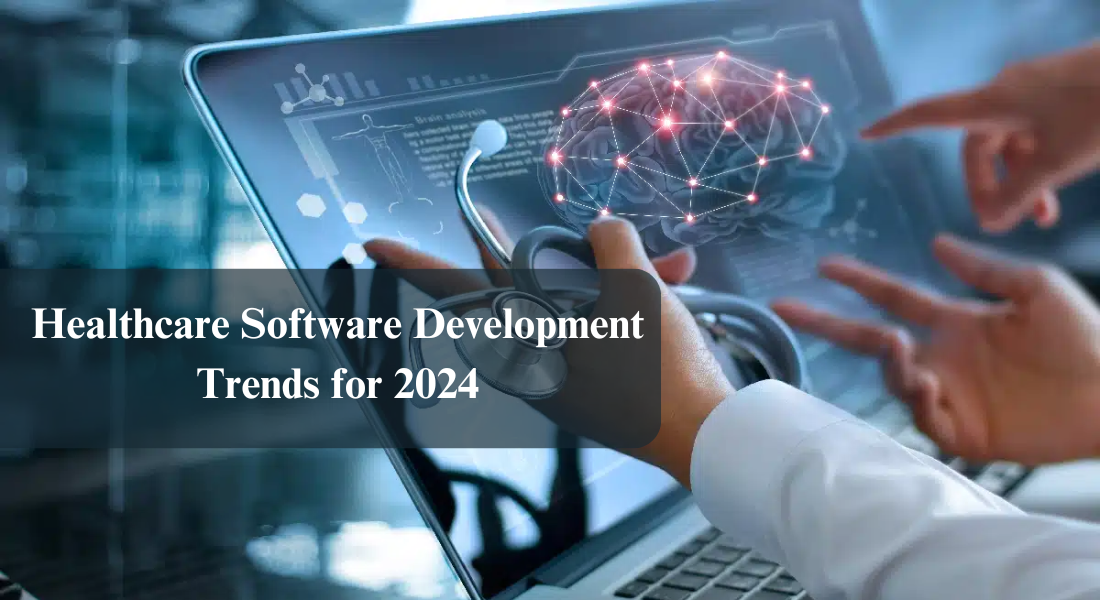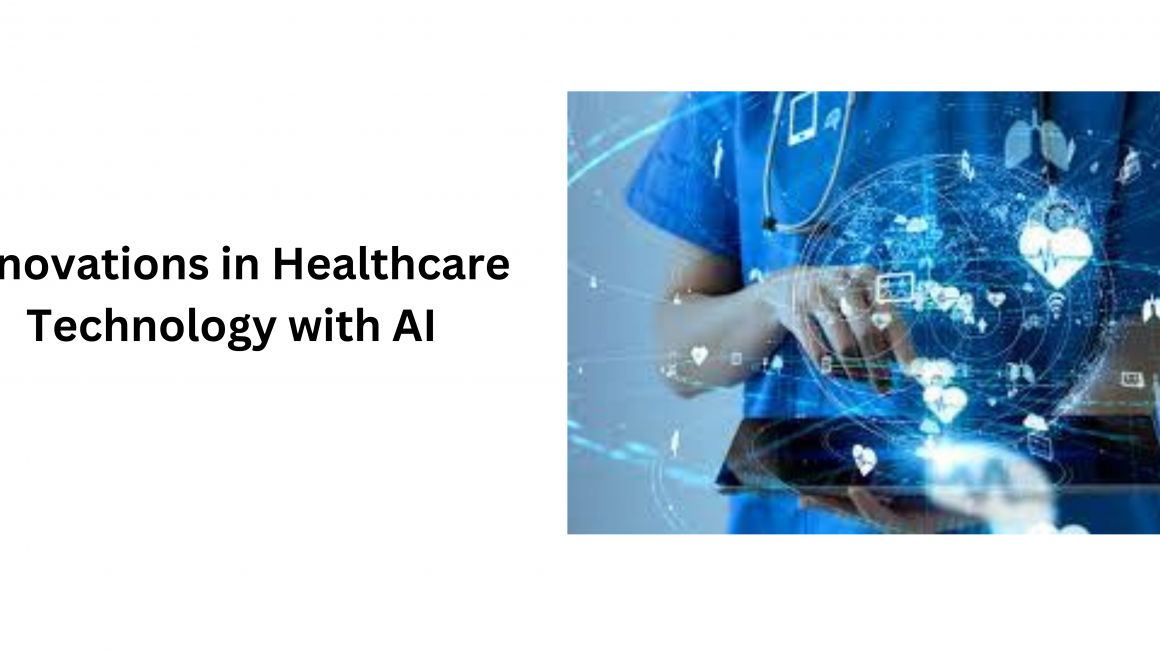The Importance of Healthcare Efficiency and Security
Efficiency and security are the main components of any successful healthcare system. Therefore, by optimizing workflows and giving security to sensitive patient information, healthcare providers can deliver better care and improve patient outcomes. Hence, in today’s fast-paced, interconnected world, these aspects become increasingly important for maintaining a patient-centric approach and upholding the highest standards of care.
The Role of Technology in Healthcare
Technology plays an important role in modern healthcare. Modifying how we identify, treat, and handle different health issues. So from cutting-edge medical devices to advanced data analytics, it enables healthcare professionals to make informed decisions. Also, streamline processes, and enhance patient experiences, when the healthcare environment develops. The need for innovative, secure, and efficient solutions grows exponentially.
Introduction to EDI (Electronic Data Interchange)
EDI is a technology that enables computer systems to exchange information in a standardized format. Therefore, in the context of healthcare, EDI solutions make the exchange of data safer and more effective. It helps in transferring medical records, insurance claims, and other essential data between various stakeholders. It also includes hospitals, laboratories, and insurance companies. As a result, by implementing EDI, healthcare providers can improve efficiency, reduce errors, and enhance overall security, ultimately benefiting both patients and the healthcare system as a whole.
The Basics of Healthcare in EDI
What is EDI and Its Applications
EDI is a computer-based system for sharing data in a clear way. In other words, It helps exchange important details between different systems. In healthcare, EDI safely shares key data like patient records, medical claims, and supply chain info. By using easy-to-understand formats, EDI helps healthcare groups like hospitals, clinics, labs, and insurance companies talk to each other. Hence, this leads to better efficiency, fewer mistakes, and stronger security.
In short, this efficient data exchange streamlines processes, minimizes the chances of errors, and bolsters security measures. Beyond healthcare, EDI services are also applied in industries like retail, logistics, and finance, proving its versatility in managing data transfers across various sectors.
Key EDI Standards in Healthcare: HL7, X12, etc.
Several EDI standards have been created to fulfill the specific needs of the healthcare sector. Among them, two well-known standards are Health Level Seven International (HL7) and Accredited Standards Committee X12 (ASC X12).
The dealings, integration, sharing, and recovery of electronic health information are facilitated through the use of HL7, which is a standard recognized globally. It covers various aspects of healthcare data management, including patient administration, clinical observations, and diagnostic reporting.
ASC X12, on the other hand, focuses on information sharing connected to a business. For example, insurance claims, eligibility inquiries, and payment information. Under HIPAA, specific X12 transaction sets are required for electronic healthcare transactions in the United States.
The History of EDI
In the early 1970s, the healthcare industry faced a significant challenge. Therefore, healthcare providers were dealing with an increasing amount of paperwork. So, the lack of a standardized system for exchanging information made it difficult to manage this paperwork efficiently. It was taking too much time to process patient records, insurance claims, and other administrative tasks. This situation was not only time-consuming. But also resulted in many errors and mistakes, leading to poor patient experiences. Hence, the idea of EDI healthcare evolved to address this issue.
The goal of EDI was to automate the exchange of information between healthcare providers, insurance companies, and other stakeholders. Initially, the adoption of EDI was slow, as technology was still in its infancy, and the cost of implementing such systems was high. However, as technology advanced and costs decreased. Healthcare organizations began to adopt EDI more widely. Hence, these solutions proved to be effective in reducing administrative burdens, streamlining processes, and improving efficiency.
Additionally, the introduction of HIPAA in 1996 was a significant milestone in the history of EDI. Certain EDI standards must be used for electronic transactions containing health information, according to HIPAA. This meant that healthcare providers had to adopt EDI. To comply with the regulations. This mandate provided a significant boost to the adoption of EDI. Hence, making it a standard practice in the industry.
Lastly, the exchange of Electronic Data Interchange in the healthcare industry is crucial. It makes it possible for healthcare firms to increase productivity, cut expenses, and offer better services. It has revolutionized the way healthcare providers operate by facilitating communication and data exchange in a standardized electronic format, leading to improved patient care.
Importance of HIPAA Compliance
HIPAA is a federal law in the United States. It sets standards for protecting sensitive patient information.
Ensuring patient privacy and data security
For the sake of patient privacy and data security, HIPAA is crucial. To protect the sensitive information of patients, healthcare EDI solutions must employ strong security measures. For example, medical records, billing information, and personal identification data. Hence, Identity fraud, data theft, and illegal access may all be avoided by adhering to HIPAA requirements. By ensuring patient privacy and data security, healthcare organizations can build trust with patients.
Ensuring accurate and timely data exchange
HIPAA compliance also ensures accurate and timely data exchange between healthcare providers and payers. By using standardized EDI transactions, healthcare organizations can streamline their operations. It also reduces errors and improves efficiency in data exchange. Therefore, this leads to faster and more accurate processing of claims, resulting in better financial outcomes for both healthcare providers and patients.
Staying up to date with evolving regulations
HIPAA regulations are constantly evolving. So, Healthcare organizations must stay up-to-date with the latest changes to ensure ongoing compliance. However, this requires regular training and education for staff. By staying up-to-date with evolving regulations, healthcare organizations can continue to protect patient data and maintain their compliance with HIPAA standards.
Advantages of EDI
EDI solution providers make systems that help with everyday tasks and cut down manual work. This saves time and lets staff focus on patients. Hence, It also makes data sharing and communication faster and more accurate.
- Money Savings: EDI saves money by lowering costs linked to manual tasks. This helps healthcare groups use their money smarter, leading to better patient care and financial control.
- Happier Patients: EDI systems make healthcare better for patients by making things like sign-up, appointments, and billing easier. With fewer mistakes and a smoother process, patients enjoy a better healthcare journey.
- Stronger Safety: Healthcare EDI transactions in healthcare help keep patient data safe. Similarly, they follow the rules like HIPAA to keep data private and lower the risk of data breaches. This helps healthcare groups earn patient trust and protect their good name.
- Better Communication: Healthcare providers may communicate more effectively, thanks to EDI. By sharing information quickly and accurately, healthcare professionals can collaborate more effectively. Therefore, this leads to better patient care and decision-making.
- Easier Compliance: EDI systems help healthcare organizations follow industry rules and regulations. In other words, they ensure that data handling and privacy standards are met. Hence, by making it easier for organizations to stay compliant and avoid penalties.
- Faster Response Times With EDI: Healthcare providers can access and process patient information more quickly. This leads to faster response times for treatment, diagnosis, and referrals, which ultimately benefits patients and improves their outcomes.
Simplifying Healthcare with EDI Systems
Easy Patient Sign-Up
EDI makes signing up patients simple and fast. It gathers and enters data automatically, which means fewer mistakes and saves time. Therefore, this leads to a better process and happier patients.
Stress-Free Appointment Planning
EDI in healthcare helps with scheduling appointments. They do this task automatically, so healthcare providers can avoid problems like double bookings. This helps patients and providers save time and work better.
Fast Billing and Insurance Work
EDI speeds up billing and insurance claims. Healthcare providers can send claims quickly, getting approvals faster and with fewer rejections. This helps healthcare groups stay strong financially.
Simple Data Sharing
EDI lets healthcare providers share patient data safely and easily. Hence, this helps doctors work together and make smart choices for patient care.
Better Supply Management
EDI helps healthcare facilities manage their supplies. It keeps track of what’s needed, cutting down waste and making patient care more efficient.
Trustworthy Patient Records
EDI makes patient records more accurate by lowering mistakes. So, healthcare professionals can trust this information to make important choices. This leads to better care and higher quality healthcare.
Stronger Data Safety
EDI systems in healthcare focus on keeping data safe. To secure patient information, they have strict measures in place. In other words, this helps avoid data breaches. Also keeps patients and healthcare organizations happy and safe.
Also Read:- EDI 834 Benefit Enrollment And Maintenance Specifications
Overcoming Challenges in EDI
Healthcare EDI has many good points, but it also has some problems. These are some typical problems and fixes for them:
Technical Problems
EDI can be hard to use with other technology. It can be difficult to teach staff to use it. So, this can slow things down. To fix this, give staff time and help to learn the new system.
Cost
Although EDI can save costs, it can initially be pricey. You need to buy new things, teach staff, and change how you work. Likewise, plan your budget carefully to handle these costs.
Security Dangers
Keep patient data safe when using EDI. If you don’t, bad things can happen, like data breaches. This can hurt patients and the organization. So, use strong security tools and teach staff to keep data safe.
Fear of Change
EDI can change how you work. Staff might not like this and fight against it. This can slow down EDI use and make it work less well. So, to fix this, show staff how EDI may improve and simplify their job.
Staff Training
It might be tough for staff to learn new EDI systems. Offering extra training and support can help them feel more comfortable and confident with the new technology.
Data Quality
EDI relies on good data to work well. Inadequate data quality might result in poor patient care and incorrect judgments. To fix this, make sure to check and clean data regularly.
Vendor Support
EDI vendors might not always give the help you need. Choose a vendor who offers good support and listens to your needs.
Partnering with Experienced EDI Providers
EDI is a helpful tool in healthcare. It makes things faster and better and helps patients. To get the most from EDI, work with expert service providers.
Why work with experts?
Working with experts is important for success in EDI. They are skilled in the area and capable of handling difficulties. As a result, by working with experts, healthcare groups can lower risks, work better, and help patients more.
How to pick an EDI partner?
When choosing a partner, think about their experience in healthcare. They should have a history of doing good work with EDI. Also, think about their skills, how they keep data safe, and their prices. So, make sure they can make special plans just for your group.
Good things from working with EDI partners
Working with EDI partners has many benefits for healthcare groups. They help keep data safe, make data sharing better, and lower costs. Expert Electronic Data Interchange software Providers can make plans to make healthcare work smoother and help patients more.
Building Strong Relationships
EDI is a significant contributor to healthcare innovation. It accelerates processes, improves quality, and fosters better patient experiences. To maximize EDI’s potential, it’s important to collaborate with proficient service providers.
Why trust experts?
Relying on experts is the foundation of success in EDI. They offer extensive knowledge and can adeptly manage challenges. When healthcare organizations work with experts, they can reduce risks, increase efficiency, and enhance patient outcomes.
EDI is important for healthcare groups to stay ahead in the fast-moving healthcare world. Working with expert and trustworthy partners is key to getting the most from EDI.
Case Studies: Successful EDI Implementations
EDI Healthcare Integration helps the healthcare industry a lot. It lets different groups share data safely and quickly. In this section, we’ll talk about how EDI has helped small healthcare practices, big hospital networks, and insurance providers.
Small Healthcare Practices
EDI has been great for small healthcare practices. For example, there is a family clinic that uses EDI to make patient registration, scheduling, and billing better. EDI lowered mistakes and saved time. This made patients and staff happier. In short, the clinic also saved money by cutting admin costs, so they could spend more on patient care.
Large Hospital Networks
Big hospital networks also use EDI well. For example, there is a hospital with many locations that use EDI to manage patient records, billing, and claims. EDI made it easy for different branches to share data. Hence, this saved money, made patients happier, and led to better care. EDI also helped the hospital follow the rules like HIPAA.
Insurance Providers
Insurance providers also benefit from EDI. A big insurance company used EDI to share claim information with healthcare providers. This has resulted in faster and better processing of claims. As a result, the business’s clients were pleased, and fewer claims were denied.
In the end, EDI has helped small healthcare practices, large hospital networks, and insurance providers. By using EDI, these groups work better, are safer, and give patients a better experience. Therefore, this leads to a better healthcare system for everyone.
The Future of EDI
The future of EDI is bright because of new technology. Here are some ways it will change:
More AI and Machine Learning
In modern times, the healthcare sector is utilizing the potential of AI and ML technologies. They make patient care better and work faster. So, EDI can use these tools to work even better and be more accurate.
Better Connections
It’s been hard for EDI to connect different systems. The future will have more standard ways to share data. Therefore, this will help healthcare providers work together to care for patients.
Smarter Data Use
Healthcare data is now digital. EDI systems can use smart ways to study this data. So this will help them find trends and make better choices for patient care.
More Cloud-Based EDI
Cloud computing has changed many industries, including healthcare. Cloud-based EDI is good because it can grow, costs less, and is easy to use.
Stronger Security
EDI service providers must protect patient data from hackers. They will use better ways to keep data safe, like new encryption methods and teaching staff about online safety.
As healthcare changes, providers must work with the best EDI partners. This will help them use new technology to work better, save money, and make patients happy.
Conclusion
EDI is changing the way healthcare organizations work. It makes them more efficient, accurate, and patient-focused. Here are the main points to remember:
EDI can bring many advantages. For example such as improved efficiency, enhanced security, cost savings, better patient experiences, and streamlined processes. Challenges and limitations: While EDI can help healthcare organizations, they also have some challenges and limitations, such as interoperability issues and cybersecurity risks.
To stay ahead of the curve, healthcare organizations should partner with an experienced and reliable EDI service provider.
If you’re thinking about outsourcing your EDI, work with a dependable, knowledgeable vendor. Connect with TopOrgs to learn more about how our list of EDI outsourcing companies can help your organization streamline processes, enhance security, and improve patient experiences.
FAQ’s
In delivering top-notch patient care that’s both prompt and safe, healthcare efficiency and security stand as cornerstones. They’re indispensable for dealing with sensitive patient details, making processes slicker, and staying within the law.
Technology is a key player in healthcare, boosting how accessible, efficient, and high-quality care is. It paves the way for swapping electronic data (EDI), remote medicine, AI-driven diagnoses, and more besides.
EDI refers to sending structured electronic data between organizations. In the healthcare field, it makes swapping data, such as patient records, bills, and supplies management, frictionless.
In the healthcare industry, HL7 and X12 are EDI standards, ensuring data swaps are both secure and dependable. HL7 is typically employed for clinical data, while X12 tends to be used for administrative and financial data.
Adhering to HIPAA rules guarantees the safety of patient health information (PHI). It sets out standards for keeping, sharing, and processing PHI in order to uphold patient privacy and secure data.




